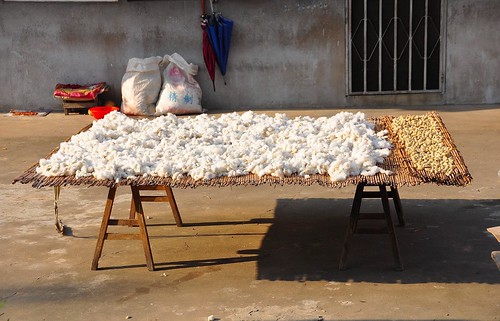
photo credit
Accelerated Productivity Growth Offsets Decline in Resource Expansion in Global Agriculture by Keith Fuglie.
"The rate of growth in global agricultural productivity has accelerated in recent decades and accounts for an increasing share of expanding agricultural production."
Prospects for Future Agricultural Growth
While the ERS analysis found no evidence of a general slowdown in global agricultural total factor productivity through 2007, there was a slowdown in the growth of resources employed in agriculture. The results have important implications for the appropriate supply-side policy response to increased real agricultural prices in the global economy since 2005.
The principal policy lever to increase TFP growth is to boost spending on agricultural research, but the time lags between research investment and productivity growth are long. The slowdown in the rate of growth in agricultural resources was partly a consequence of declining or low real (inflation-adjusted) agricultural commodity prices between 1981 and 2005. That situation encouraged producers to find better opportunities for their capital and labor outside of agriculture.
It is also partly a consequence of the institutional changes in the countries of the former Soviet bloc that precipitated a massive exit of resources from agriculture in the 1990s. The substantially higher real agricultural prices observed since 2005 and renewed agricultural growth in the former Soviet countries should positively affect the rate of global agricultural investment and resource growth. As long as TFP growth continues at its recent pace, the rate of real output growth in global agriculture should increase in the short run.
Despite this generally optimistic conclusion, agricultural productivity growth clearly has been uneven. The evidence suggests that TFP growth may in fact be slowing in developed countries while accelerating in some developing countries. Nonetheless, many developing countries have been unable to achieve or sustain productivity growth in agriculture and, as a consequence, suffer from low levels of rural welfare and food security.
While this inability to achieve or sustain productivity growth has not contributed to a slowdown in global TFP growth because the developing countries’ growth rates were never high to begin with, it has led to agriculture performing below its potential and has kept these countries poor. The largest group of countries in this low-growth category is in Sub-Saharan Africa, but the category also includes countries in West Asia and the Caribbean.
Strengthening research, extension, and rural education in these countries, as well as maintaining these capacities in more advanced countries, is a requisite for enhancing long-term agricultural productivity growth.